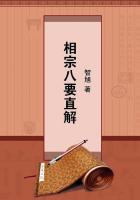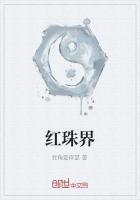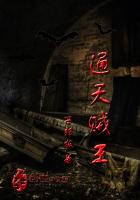Linnaeus named this group of plants for Matthias de l'Obel, a Flemish botanist, or herbalist more likely, who became physician to James I.of England.
Preferably in dry, sandy soil or in meadows, and over a wide range, the slender, straight shoots of PALE SPIKED LOBELIA (L.
spicata) bloom early and throughout the summer months, the inflorescence itself sometimes reaching a height of two feet.At the base of the plant there is usually a tuft of broadly oblong leaves; those higher up narrow first into spoon-shaped, then into pointed, bracts, along the thick and gradually lengthened spike of scattered bloom.The flowers are oft en pale enough to be called white.Like their relatives, they first ripen their anthers to prevent self-fertilization.
The lithe, graceful little BROOK LOBELIA (L.Kalmii), whose light-blue flowers, at the end of thread-like footstems, form a loose raceme, sways with a company of its fellows among the grass on wet banks, beside meadow runnels and brooks, particularly in limestone soil, from Nova Scotia to the Northwest Territory and southward to New Jersey.It bears an insignificant capsule, not inflated like the Indian tobacco's; and long, narrow, spoon-shaped leaves.Twenty inches is the greatest height this little plant may hope to attain.
Not only beside water, and in it, but often totally immersed, grows the WATER LOBELIA or GLADIOLE (L.Dortmanna).The slender, hollow, smooth stem rises from a submerged tuft of round, hollow, fleshy leaves longitudinally divided by a partition, and bears at the top a scattered array of pale-blue flowers from August to September.
INDIAN or WILD TOBACCO; GAG-ROOT; ASTHMA-WEED; BLADDER-PODLOBELIA
(Lobelia inflata) Bellflower family Flowers - Pale blue or violet, small, borne at short intervals in spike-like leafy racemes.Calyx 5-parted, its awl-shaped lobes 1/4 in.long, or as long as the tubular, 2-lipped, 5-cleft, corolla that opens to base of tube on upper side.Stamens, 5united by their hairy anthers into a ring around the 2-lobed style.Stem: From 1 to 3 feet high, hairy, very acrid, much branched, leafy.Leaves: Alternate, oblong or ovate, toothed, the upper ones acute, seated on stem; lower ones obtuse, petioled, to 2 1/2 in.long.Fruit: A much inflated, rounded, ribbed, many seeded capsule.
Preferred Habitat - Dry fields and thickets; poor soil.
Flowering Season - July-November.
Distribution - Labrador westward to the Missouri River, south to Arkansas and Georgia.
The most stupid of the lower animals knows enough to let this poisonous, acrid plant alone; but not so man, who formerly made a quack medicine from it in the days when a drug that set one's internal organism on fire was supposed to be especially beneficial.One taste of the plant gives a realizing sense of its value as an emetic.How the red man enjoyed smoking and chewing the bitter leaves, except for the drowsiness that followed, is a mystery.
On account of the smallness of its flowers and their scantiness, the Indian tobacco is perhaps the least attractive of the lobelias, none of which has so inflated a seed vessel, the distinguishing characteristic of this common plant.
CHICORY; SUCCORY; BLUE SAILORS; BUNK
(Cichorium Intybus) Chicory family Flower-head - Bright, deep azure to gray blue, rarely pinkish or white, 1 to 1 1/2 in.broad, set close to stem, often in small clusters for nearly the entire length; each head a composite of ray flowers only, 5-toothed at upper edge, and set in a flat green receptacle.Stem: Rigid, branching, to 3 ft.high.Leaves:
Lower ones spreading on ground, 3 to 6 in.long, spatulate, with deeply cut or irregular edges, narrowed into petioles, from a deep tap-root; upper leaves of stem and branches minute, bract-like.
Preferred Habitat - Roadsides, waste places, fields.
Flowering Season - July-October.
Distribuition - Common in Eastern United States and Canada, south to the Carolinas; also sparingly westward to Nebraska.
At least the dried and ground root of this European invader is known to hosts of people who buy it undisguised or not, according as they count it an improvement to their coffee or a disagreeable adulterant.So great is the demand for chicory that, notwithstanding its cheapness, it is often in its turn adulterated with roasted wheat, rye, acorns, and carrots.Forced and blanched in a warm, dark place, the bitter leaves find a ready market as a salad known as "barbe de Capucin" by the fanciful French.Endive and dandelion, the chicory's relatives, appear on the table too, in spring, where people have learned the possibilities of salads, as they certainly have in Europe.
>From the depth to which the tap-root penetrates, it is not unlikely the succory derived its name from the Latin succurrere =to run under.The Arabic name chicourey testifies to the almost universal influence of Arabian physicians and writers in Europe after the Conquest.As chicoree, achicoria, chicoria, cicorea, chicorie, cichorei, cikorie, tsikorei, and cicorie the plant is known respectively to the French, Spanish, Portuguese, Italians, Germans, Dutch, Swedes, Russians, and Danes.
On cloudy days or in the morning only throughout midsummer the "peasant posy" opens its "dear blue eyes""Where tired feet Toil to and fro;
Where flaunting Sin May see thy heavenly hue, Or weary Sorrow look from thee Toward a tenderer blue!"- Margaret Deland.
In his "Humble Bee" Emerson, too, sees only beauty in the "Succory to match the sky;" but, mirabile dictu, Vergil, rarely caught in a prosaic, practical mood, wrote, "And spreading succ'ry chokes the rising field."IRON-WEED; FLAT TOP
(Vernonia Noveboracensis) Thistle family.














